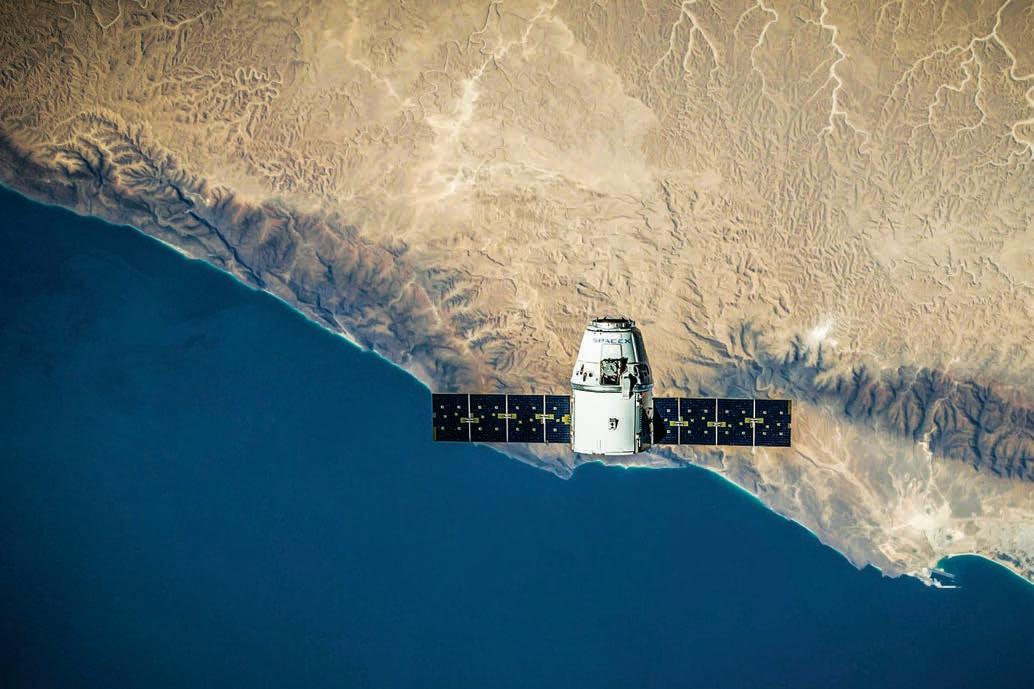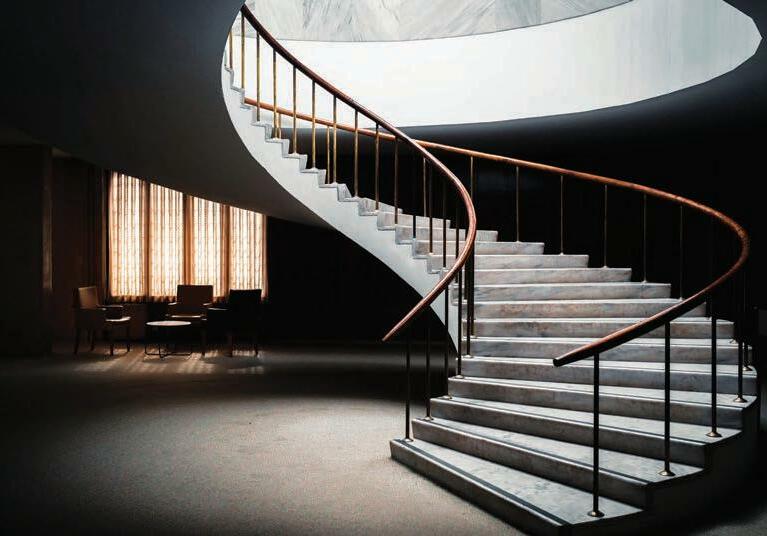
7 minute read
Health & Science

Hopes of one day making a lunar colony may have found some extra encouragement. Normally, the surface of the Moon reaches upwards of 260 degrees Fahrenheit during the day. en, it drops to a chilling minus 280 degrees Fahrenheit at night. However, research shows some lunar pits stay around 63 degrees Fahrenheit, providing muchneeded safety from the elements.
Advertisement
New research shows stable temperatures in lunar pits could be perfect for lunar colonies ese stable temperatures could provide additional protection for a possible Moon-based colony. Additionally, access to caves and other formations that humans can shelter it may be found within such pits. If we were to create a lunar colony on the surface of the Moon, building it within such a pit may prove worthwhile in helping protect from intense temperatures.
We rst discovered pits on the Moon in 2009. Since then, scientists have long wondered whether they might lead to caves or underground structures. While we can’t say for sure, this new research proves that they have much more stable temperatures than other surface areas on the Moon. ese stable temperatures are important for the viability of a lunar colony for multiple reasons. First, if the temperatures are stable and stick around 63 degrees Fahrenheit, we could build systems that work well within those areas. Whereas if we built those same structures on the main surface, we’d have to account for the wild temperature changes.
NASA is already planning to send humans back to the Moon in the next few years. However, being able to create a long-term lunar colony would be astounding. Additionally, doing so would allow us to open a new door to studying the Moon and its surface.
Not only could be test the long-term e ects of the lower gravity on humans, but we might also be able to make some breakthroughs on creating arti cial gravity. at would help combat any longterm e ects the lower gravity of places like the Moon and Mars might have on the human body.
Additionally, building a lunar colony could allow us better on-site testing of growing plants in lunar soil. Growing plants in places that aren’t normally acclimated for it would be a huge breakthrough for space exploration ad colonisation. e researchers published their ndings in the journal Geophysical Research.
While the desire to live on the moon decreases considerably when you nd out it isn’t made of cheese, there are still a lot of reasons to dream of one day calling it home. For one, there is the pure wonder of living somewhere other than earth. ere’s also the strategic value in using the moon as a base for launching exploration deeper into space.
But what would that cost to put a colony on the moon? After all, the moon has just one-sixth of the gravity of Earth and almost none of the water. at also means there’s not enough air to breathe, and that you’re exposed to dangerous radiation from the sun that’s normally blocked out by Earth’s atmosphere.
Here’s a closer look at what would be required to build a moon colony and what it could ultimately cost.



Although we generally understand exercise to be good fo us in all sorts of ways, scientists continue to make interesting inroads around the speci cs of this relationship. e latest comes from a team in Germany which has found that even slight changes to regular physical activity, such as taking the stairs instead of the elevator, can counter the age-related loss of volume in brain regions linked to disease.
Research has demonstrated how exercise can help combat some of the e ects of ageing. is includes studies showing that regular physical activity can preserve the heart’s elasticity, reduce mild cognitive impairment and induce hormones that protect against Alzheimer’s and dementia.
Scientists at the German Center for Neurodegenerative Diseases (DZNE) have looked to add to this growing body of evidence, by looking at exercise’s impacts on speci c regions of the brain.

Fly me to the Moon
Here’s where we might really be able to set up a colony on the Moon... and what it might cost
Getting to the Moon
Escaping the earth’s gravity is no easy feat. Just getting out into orbit requires an enormous amount of energy, hence the massive rocket boosters and fuel tanks you see attached to shuttles prior to launch. So, before you can build a colony on the moon, you’ll have to move everything you’ll need there at great, great cost.
Cost: $10,000 per pound
e current cost to put anything into space is $10,000 per pound, according to NASA. And, no, there’s no cheaper option for ‘ground shipping’. at would mean that sending a 10-pound bag of rice to feed astronauts living on the moon would run you a whopping $100,000 just for transportation. at would make any moon colony a massive and very expensive undertaking.
Take the stairs, to save the years
Need: Electrical Power
Once on the moon, astronauts are likely to need a lot of energy to keep themselves alive. Whether it’s maintaining a breathable atmosphere or running grow lights for growing food, a steady supply of electricity will be the only thing keeping the astronauts alive. However, because of its orbit, most of the moon’s surface has nights that can last for two weeks, making reliable solar energy nearly impossible outside of select areas.
Cost: $20 million
e people at NASA have a plan for this, and not just for the moon. e space agency concluded testing in 2018 for a project called Kilopower, a small nuclear reactor that could be transported great distances before providing
To do so, the scientists tapped into data from a population-based study of more than 2,500 subjects aged 30 to 94. is involved analysing brain volume and thickness of the cortex through MRIs and assessing their physical activity, with the subjects made to wear an accelerometer on their thigh for seven days.
“We were able to show that physical activity had a noticeable e ect on almost all brain regions investigated,” said Fox. “Generally, we can say that the higher and more intense the physical activity, the larger the brain regions were, either with regard to volume or cortical thickness. In particular, we observed this in the hippocampus, which is considered the control center of memory. Larger brain volumes provide better protection against neurodegeneration than smaller ones.” ose that stand to bene t most may be inactive older adults. e scientists found that the largest, and almost 10kw of power for 10 years. Not exactly enough to power Moon Las Vegas, but certainly enough to support a small human outpost on a di erent planet. e budget for the entire project came to less than $20 million, impressive considering similar projects in the past ran budgets of nearly $1 billion in one case. And that doesn’t include the cost of launching it into space, which could be a lot given that it weighs from 880 to 3,000 lbs.
Need: Food
Everyone needs to eat, but a moon colony would face some interesting issues. Either you’re launching food resupply missions at enormous cost, or you need to gure out how to grow your own food in a place without air and nights that can last two weeks at a time.
Even if there is a farm on the moon, things are di cult. Water moves di erently in low gravity environments, meaning that soil can often be ine ective. And if you either fail your resupply mission or in harvesting your moon crops, it could place the lives of anyone living on a moon colony in jeopardy.
Cost: $230,000 per person
It is possible to grow things on the moon. In fact, the Chinese moon lander Chang’e 4 succeeded in sprouting cotton seeds while on the lunar surface, the rst life to grace its surface since the nal Apollo mission.
You need roughly an acre of land per person to support a population on earth, but hydroponic farming can improve yields by ve times or more.
As far as the cost is concerned, AmHydro sells a basic hydroponic bundle that can yield between 3,500 and 4,000 plants per week and t into a 4,320-square-foot greenhouse (roughly a tenth of an acre) will run you $161,500. And you’d hypothetically need two for each person.
sudden, volume increases were observed when comparing inactive subjects over 70 with moderately active ones.
“In principle, this is very good news – especially for those who are reluctant to exercise,” says study author Ahmad Aziz. “Our study results indicate that even small behavioural changes, such as walking 15 minutes a day or taking the stairs instead of the elevator, may have a substantial positive e ect on the brain and potentially counteract age-related loss of brain matter and the development of neurodegenerative diseases.” In particular, older adults can already pro t from modest increases of low intensity physical activity.
Genetic analysis of brain regions most impacted by uptake in physical activity indicated that they are home to high amounts of mitochondria, which provide our body with energy but need a lot of oxygen to do so.








